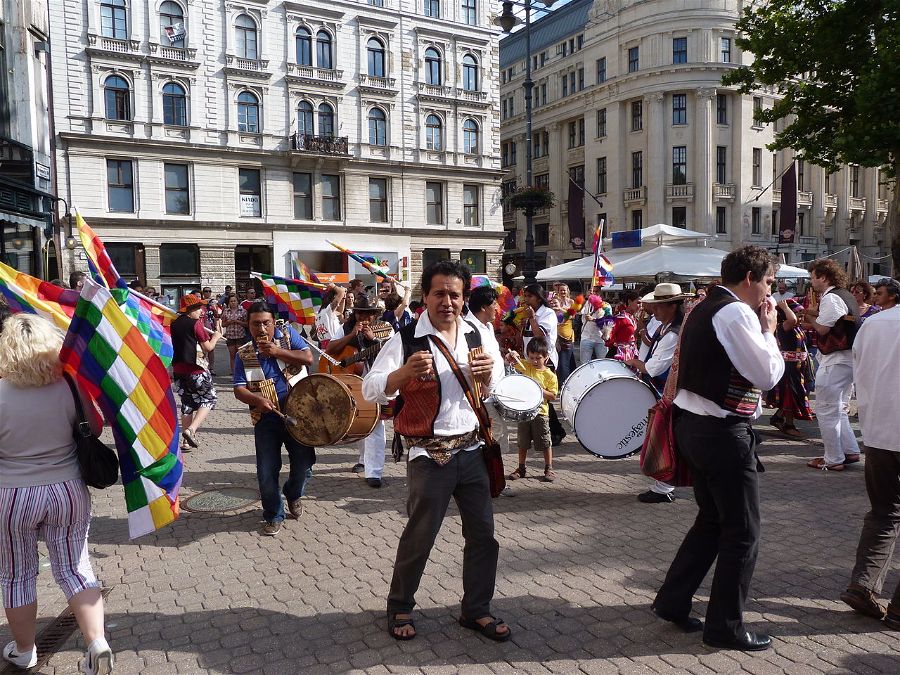This is an exciting time of year when we celebrate the year gone by and look forward to the new one. As the days get darker and darker, we gather with our family and friends, or with our favorite cat on our lap, to take stock of the past year and plan ahead for the new one.
The sun during the winter solstice as it traverses the Cathedral of Mallorca to line up with its rose window. Balearic Islands, Spain. Photo Josep Lluís Pol i Llompart.
It’s not coincidental that multiple cultures have chosen the time around the winter solstice, the shortest day of the year, to celebrate and have a feast. This day is the pivot point between the gradually darkening days and the gradually lightening ones. The word “solstice” comes from the Latin sol, “sun,” and sistere, “to make stand (still).” The sun appears to stand still since it stops setting further south and the next day starts setting further north again (reverse all of this for our friends in the Southern Hemisphere, where this day is the summer solstice). It is the darkest day of the year and a time of hope, looking forward to brighter days ahead.
The high priest holds a drinking horn and ceremonial ring prior to conducting a pagan religious ceremony in Iceland. Photo Haukurth.
Lights are a major theme at the time of the winter solstice, to dispel the dark. In Iceland, contemporary Icelandic pagans celebrate Jólablót (Yule Sacrifice) on the winter solstice, gathering around a ceremonial fire to conduct a religious ceremony. And of course we are all familiar with the Jewish Festival of Lights, Channukah, which lasts eight days and ends just before the solstice.
Taking a bath with yuzu citrus fruit on the winter solstice to ward off colds. Katori City, Japan. Photo: Katorisi.
Purifying rituals involving water are also common. In Japan, it's traditional to take a citron-infused bath on the winter solstice, called yuzuyu. This tradition dates back to the Edo period (1603-1868). Visitors to hot spring resorts and public bathhouses will often find tubs filled with bobbing spheres of citron. Both the fruit’s juice and its sunny color are traditionally thought to have warming properties, helping bathers to ward off illness and setting their minds toward the distant warmer months. As bathing in Japan is generally a nighttime activity, the soothing citrus scent and lingering warmth of the bath also act to quickly lull solstice revelers to sleep.*
* https://www.nippon.com/en/views/b06004/
A table set for Yaldā Night for a celebration by Persians (Iranians) in Amsterdam. Photo Pejman Akbarzadeh (Persian Dutch Network).
Gathering to eat and drink is a common way to celebrate the winter solstice. In Persian (Iranian) families, friends and family gather together for Yaldā Night on the winter solstice to feast and read poetry into the early morning hours. Fruits and nuts are most commonly offered, particularly pomegranates and watermelon, their color symbolizing the rosy glow of dawn and the life force.
Black sesame paste filled glutinous rice balls, Tang Yuan. Photo: Alpha, Melbourne, Australia.
Red is also an auspicious color for the glutinous rice balls, Tang Yuan, that the southern Chinese serve for their winter solstice celebration, Dongzhi. They can be stuffed with ground sesame or lotus seed paste. They symbolize reunion, with each member of the family receiving one large one in addition to several smaller ones. To add to the celebratory effect, they are often served with a mild rice wine containing whole grains of glutinous rice.
Chicha served at the "Fiesta del Huán" at the Archaeology Museum of Sogamoso, Boyacá, Colombia. Photo: Tisquesusa.
Speaking of celebratory effects, the indigenous people of Colombia serve Chicha, a fermented grain beverage, at their yearly "Fiesta del Huán," a winter solstice ceremony that awaits the rising sun (Sué) in the indigenous tradition of the Muisca tribe.
Celebration of the Winter Solstice, June 21, Budapest, Peru. Photo: Derzsi Elekes Andor.
Last but not least, singing and dancing are also common ways to celebrate the solstice, or anything, for that matter. In Peru, the celebration includes several days of rehearsals, music, and drinking, culminating in a parade in praise of the sun. The final Inca ritual includes a speech, a toast of chicha to the sun and other gods, and the sacrifice of a llama. The indigenous people attend in their traditional costumes and feast on potatoes roasted in adobe ovens.
Jonathan Kruk performing Dickens's Christmas Carol at the famed Old Dutch Church in Sleepy Hollow, New York. Photo: Tom Nycz.
Here in Tarrytown and Sleepy Hollow, we celebrate the season in a similar fashion, except for the llama part. We decorate with lights, feast, imbibe, dance, sing, and tell traditional tales. Join us on one of our day-long Magical Mystery Holiday Tours and take part in the celebration! You'll get a warm glow that should see you through the end of the year, at least. Check out the details and reserve here. Only 6 spots per tour, so reserve now!









